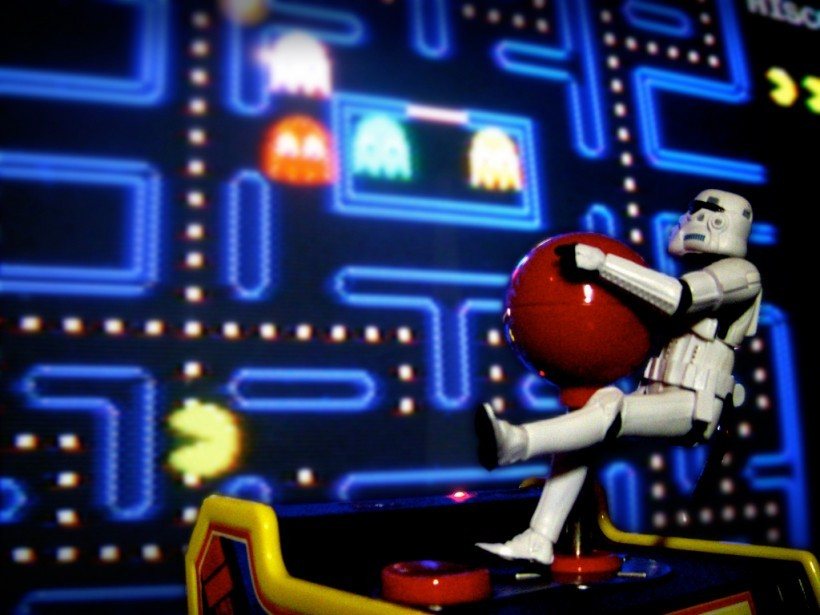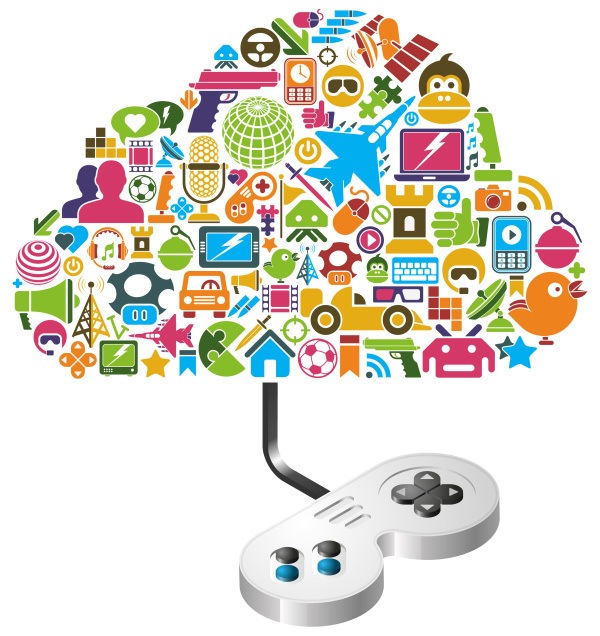Advanced Gamification And How It Can Change Your Organization
How does your organization define gamification? Choose your answer below.
- If your answer is, "A game, like Angry Birds or Halo", go to #1.
- If your answer is, "A points, badges and leaderboard system", go to #2.
- If your answer is, "The application of game psychology, principles and mechanics to content", go to #3.
Now, according to your answer, check below.
- You fall into the Sarlacc and are slowly digested over a thousand years. Go back.
- You turn into a werewolf, cursed to prowl the night forever. Go back.
- Ding, ding, ding! That is correct. Continue.
Gamification is one of those buzzwordy concepts that was going to change the world of training and development a few years back. It seems like every Fortune 500 Learning and Development team jumped on the bandwagon.
Unfortunately, it also caused a lot of confusion. Everyone had a different idea of what gamification meant and how it was supposed to be implemented. What these innovators ended up with, in many cases, was a mess of half-thought through, poorly-executed and implemented ideas. And those ideas didn’t move the employee engagement or learning needle.
Let’s take a look at the pros and cons of each of the three types of gamification mentioned above and examine where gamification goes from here.
1. Let’s Play A Game: Games As Gamification
With millions of downloads and countless hours spent playing, there’s no denying that games like Candy Crush and Monument Valley are exceedingly popular. They are fun and motivate people to stay engaged, at least at a high level, for short bursts of time. They can even be used to teach some basic concepts.
But the majority of games, including many learning games, are the equivalent of junk food. A lot of sugary eye candy with very little substance. Sure, it might be fun, but it’s mostly empty calories. Even worse, when presenting learning content within a game, there tends to be a split between the two: explore this 3D world or putt this ball into a hole, then read some text and answer a question. It does nothing to make boring content engaging, or add value, other than providing a bit of distraction between learning content.
Ultimately, the core game itself often gets in the way of learning, can become frustrating, particularly for users that just want to get the info and get out, and if the game doesn’t appeal to a player, learning just isn’t happening.
On top of all this, the game industry has set a high bar when it comes to producing quality experiences. Games that aren’t up to par are deleted and replaced in a matter of seconds. This has conditioned today’s audiences, your learners included too, to have an exceedingly low tolerance for anything less than premium. Unfortunately, most HR and training departments don’t have the budget, knowledge or resources to compete with this market. So, learners attention is lost from the get go.
Companies have tried to engage us to create these types of experiences, and we almost always pass. They might work in some instances, but we’ve yet to see one that was truly effective long term besides when teaching kids.
Pros
- Fun
- High-level engagement in short bursts
- Medium price range
Cons
- Mostly empty calories
- Gets in the way of learning
- Off-putting to some
- Often doesn’t add value to content
- Difficult to explore complex topics
- Quality doesn’t live up to audience expectations
2. Collect ‘em All: PBLs
Points, badges and leaderboard systems, or PBLs in short, are probably the most popular and well-known forms of gamification because of how simple they are to ideate and execute. Figure out the actions you want to incentivize, assign points, come up with some clever badge themes, and you’re gamified. It’s why you can find them in everything from fitness apps to your company’s internal social site.
Over the years, we’ve implemented several PBLs as part of a larger learning and gamification strategy. They’ve proven to be quite effective in spurring friendly competition among teammates and encouraging employee participation, again, when used as part of a larger strategy.
However, learning engagement driven solely by PBL systems tends to taper off long term. Tasks and rewards become repetitive, and the newness wears off. The system also requires a company-wide commitment to keeping content fresh and becomes the first thing to fall by the wayside when other work needs to get done.
That says nothing of the people that are simply not motivated by competition. What works great for a sales department might discourage a development team or another department.
When we speak with potential clients interested in gamification, many believe they want a standalone PBL system. The trouble with this, as broken down by gamification pioneer Yu-kai Chou, is that you end up with a "shell of a game experience".
In his book, "Actionable Gamification: Beyond Points, Badges, and Leaderboards", Chou has this to say:
"Many 'experts' of limited experience are only familiar with how to implement PBL mechanics and even though these sometimes create value, most of them completely miss the point of engaging the user. It is not unusual for users to feel insulted by shallow shell mechanics.
If you ask any gamer what makes a game fun, they will not tell you it’s because of the PBLs. They play it because there are elements of strategy, because it’s a great way to hangout with friends, or they want to challenge themselves. The points and badges are often an added bonus that’s nice to have depending on the context".
All that being said, PBLs have their place. Unfortunately, too many companies and vendors are willing to just bolt one of these systems onto boring content and call it good.
Pros
- Encourages friendly competition
- Taps into desire to collect
- Provides short-term motivation
- Inexpensive
Cons
- Must be part of a larger strategy
- Needs constant refreshing
- Not everyone is competitive
- Provides the shell of a game experience
3. Gamification In Disguise: Advanced Gamification
Advanced gamification is not so much a set of tools as it is a philosophy or an approach to solving learning problems. At its core, advanced gamification is all about two things:
- Supporting the key learning or marketing objectives
- Applying game psychology, principles and mechanics to content
That is to say, there is no one-size-fits-all, off-the-shelf gamification tool that will solve all of your employee learning and customer engagement woes. Advanced gamification is about adding value and serving the needs of the content.
As an example, when creating a barista training for the most well-known coffee brand in the world, our first step was to assess what the client wanted to achieve and what was standing in the way.
Training for new hires was stressful and several weeks long. They were being bombarded with information. We needed to shorten the training and allow new baristas to absorb knowledge and practice their skills before adding the stress of working the counter.
Simply, we took inventory of the content and applied a game mechanic we use often. That is cascading information theory. This is the idea that information should be broken down and presented in the most manageable snippets only when they are useful.
This mechanic is used in nearly every video game tutorial ever made. You typically don’t start out mowing down zombies. First, you learn to walk. Next, jump. Once you’ve mastered those, you might move on to more complex actions like shooting and reloading a weapon. Until finally, you are ready to take on the zombie horde.
There are dozens of additional mechanics. The key difference of advanced gamification is that instead of blindly applying gamification to content, the content dictates the applied gamification mechanics. And it all serves the key learning or marketing objectives. Since it’s not really solely about engagement, it’s about transferring knowledge or skills to an employee or customer, and the retention of that information.
Pros
- Serves learning objectives
- Content drives gamification choices
- Not one-size-fits-all
- Leads to long term engagement and learning
Cons
- Longer implementation
- Typically requires outside gamified content and UX experts
- More expensive than off-the-shelf
How To Rethink Gamification
If you’ve had limited success with gamification in your company, maybe it’s time to take another look from a different perspective.
Pick up a game, and instead of thinking about how it’s fun or holds your interest, think about what it’s trying to teach you, and how it’s trying to teach you.
Take Angry Birds for example. You could simply recreate the game by asking a question and having a learner slingshot their bird at the correct answer. Ta-da! Quasi-gamification!
Instead, consider how the game guides you to understand where and how to hold the bird and where to hit structures to increase your score. There’s some pretty complex geometry and physics in Angry Birds, yet a seven-year-old can master the game. That’s a pretty impressive learning experience.









